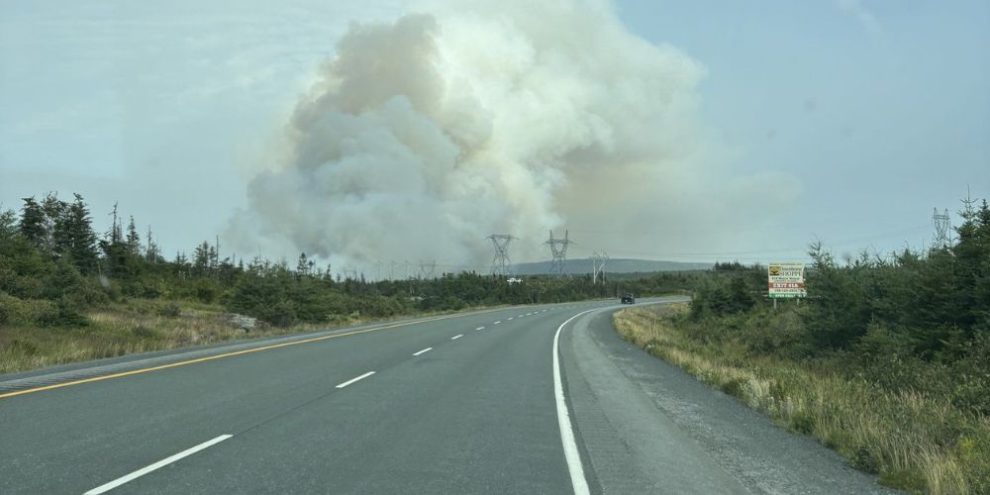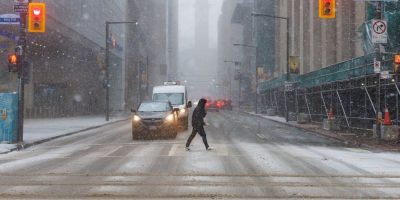
Wildfires are threatening communities across Canada, raising questions about how people can best prepare for evacuations.
Officials ordered the evacuation of parts of a suburb of St. John's, N.L., on Tuesday, and thousands more in the metropolitan area were under an evacuation alert that could require them to flee at a moment's notice.
Emergency kits, emergency plans and home checklists are all commonly cited by governments and experts as simple ways to get ready.
"A lot of fear comes out when you are told you immediately need to evacuate and you haven't had time to prepare. A lot things are going to be outside of your control," said Christopher Allsop, senior manager for emergency management at Red Cross Canada.
"So let's put into control those things that you can."
Stay informed
In the face of wildfire risks, Allsop says monitoring weather conditions, listening to trusted local media outlets and reaching out to municipal authorities are all good ways to stay informed.
It's also important to know the distinction between an evacuation alert and order, he said. An evacuation alert means you should be ready to leave on short notice and an order means you're at risk and should evacuate right away.
That doesn't mean you have to wait for an order, Allsop said. Leaving before an order is issued could help you beat traffic, secure a place to stay and bring peace of mind, he said.
"When you're given an evacuation order, sometimes it's with very little notice," he said. "So you can alleviate that stress by evacuating earlier."
Barrie's News Delivered To Your Inbox
By submitting this form, you are consenting to receive marketing emails from: Central Ontario Broadcasting, 431 Huronia Rd, Barrie, Ontario, CA, https://www.cobroadcasting.com. You can revoke your consent to receive emails at any time by using the SafeUnsubscribe® link, found at the bottom of every email. Emails are serviced by Constant Contact
Make an emergency plan
A household emergency plan is another practical tool to help prepare for an evacuation. It should include, among other things, the best escape routes out of your neighbourhood and a meeting point outside the community in case you're separated, Allsop said.
It should also include emergency contacts for the places people regularly frequent, including work, schools and after-school programs. The list could include people who can pick up students from school in an emergency, but make sure to check what authorization may be needed from the school.
Allsop and other experts also suggest putting into your plan an emergency contact from outside your community — someone who would be unaffected by the same wildfire and can provide additional support.
Lists of your insurance providers and health information are often cited as key parts of an emergency plan. Some resources suggest having the names of utility providers on hand, as well as information about how to turn off your electrical panels and water mains, if officials ask you to do so.
"Making a plan is really important," said Allsop. "If you have the time, sit down with your family and figure out if you had to evacuate, what are the things you might want to do? Where would you meet? Who would you perhaps contact?"
A good place to keep that plan would be inside an emergency kit or go bag.
Pack an emergency kit and go bag
An emergency kit is a key way to help support yourself and your family through at least the first 72 hours of an emergency, Allsop said.
Public Safety Canada suggests an emergency kit should have non-perishable food and two litres of water per person, per day, along with medications, flashlights, a radio, cash and copies of important documents, such as identification and insurance papers.
The federal department says if your emergency kit gets too heavy, it can be a good idea to separate some of the items into grab-and-go bags personalized for each individual in a household.
Allsop suggested packing toys and activities for any kids in the family can also help alleviate stress for them and for caretakers.
Preparing your home
FireSmart Canada, a national wildfire resilience program, says there are many ways to prepare a home before a potential evacuation.
The program suggests removing anything combustible within 10 metres of a home, including dead plants, patio furniture and tires. It suggests prioritizing the first 1.5 metres and then working out from there.
If you have to evacuate, it suggests shutting all windows and doors, removing window shades and curtains, and moving furniture away from the windows. Heating and air conditioning should be turned off.
The program also suggests posting a message on your door in clear view, indicating where you're going and how you can be contacted.
This report by The Canadian Press was first published Aug. 13, 2025.





